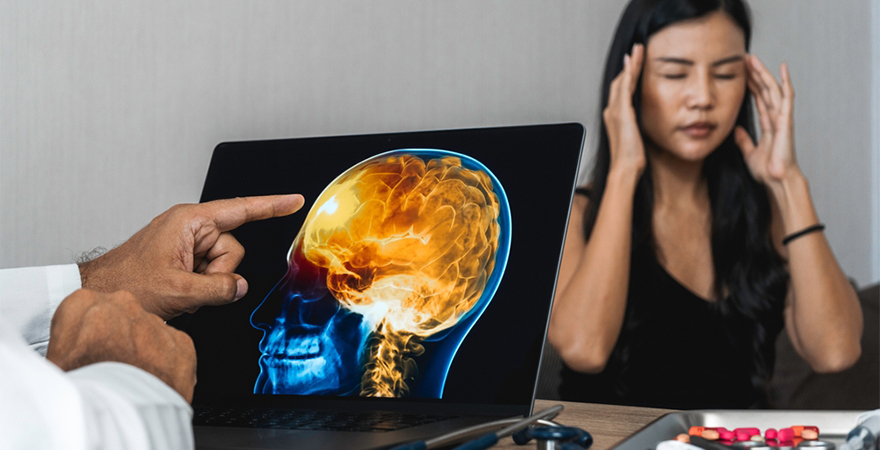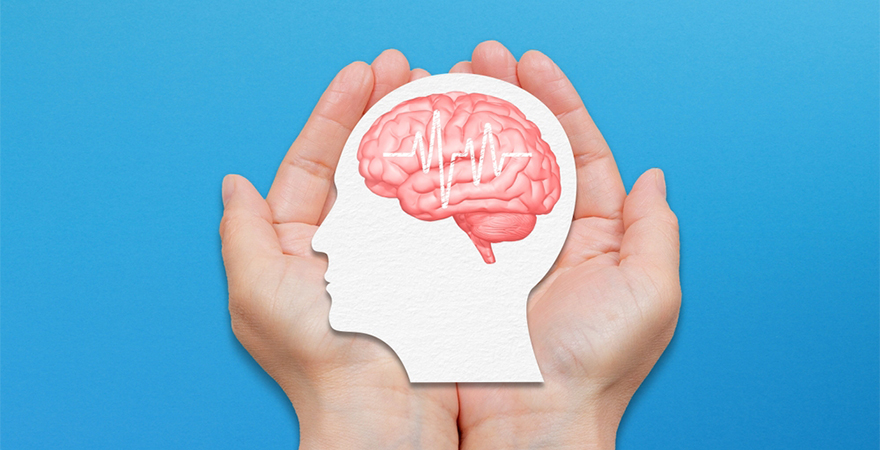
January 31, 2024
Traumatic Brain Injury (TBI) is a significant public health concern, affecting millions of individuals worldwide. It occurs due to a sudden impact or jolt to the head that disrupts the normal functioning of the brain. TBI can result from various causes, including motor vehicle accidents, falls, sports injuries, and assaults.
The consequences of TBI can range from mild, with temporary symptoms, to severe, causing long-term cognitive, physical, and emotional impairments.
This article will provide a comprehensive overview of TBI evaluation and management, covering the causes and classification of TBI, symptoms, diagnostic tools, emergency management, medical interventions, rehabilitation, complications, prognosis, and preventive measures. Also you can check this complementary guide about how trauma affects the brain and emphasizes the importance of prioritizing mental health during recovery.
Let´s see our topics for the blog!
- Introduction to Traumatic Brain Injury (TBI)
- Epidemiology and Impact of TBI
- Causes and Classification of TBI
- Symptoms and Diagnostic Tools for TBI
- Initial Assessment and Emergency Management of TBI
- Medical Interventions and Treatment Options for TBI
- Rehabilitation and Long-term Management of TBI
- Complications and Prognosis of TBI
Introduction to Traumatic Brain Injury (TBI)
Definition and Scope of Traumatic Brain Injury (TBI)
So, you’ve got a great hit on your head, and now you’re wondering what exactly is going on in that beautiful brain of yours. Well, my friend, you might be experiencing a traumatic brain injury (TBI).

TBI occurs when an external force, like a blow or jolt to the head, disrupts the normal function of the brain. It can range from mild to severe (cue the loss of consciousness and amnesia).
Epidemiology and Impact of TBI
TBIs are more common than you might think, and they can affect anyone, regardless of age or gender. In fact, according to some researchers, there are approximately 69 million new cases of TBI worldwide each year.
The impact of TBI can be life-altering, affecting everything from cognitive abilities to physical function. It can also have emotional and psychological consequences, leaving you feeling like your brain has taken an unexpected detour.
Causes and Classification of TBI
Common Causes of Traumatic Brain Injury
So, how do you end up with a TBI? Well, the causes can be as diverse as the people who have them. Falls, motor vehicle accidents, sports injuries, and assaults are just a few examples. Just remember, your brain is precious, so it’s worth protecting.
Classification of TBI based on Severity
TBIs can also be classified based on severity. You’ve got your mild TBIs, which are like the brain’s way of saying, “Hey, that was a bit of a shock, but I’ll be fine.” Then there are the moderate TBIs, which give the brain a bit more of a shake-up. And finally, we have the severe TBIs, which are like a full-on brain extravaganza that can have serious long-term consequences.
Classification of TBI based on Mechanism
Now, when it comes to mechanisms, TBIs can be classified in different ways. You’ve got your closed-head injuries, where there’s no external penetration of the skull, and then there are open-head injuries, where something actually breaks through the skull like an unwelcome guest crashing a party. Each type of injury has its own set of unique challenges and treatment options.
Symptoms and Diagnostic Tools for TBI
Primary and Secondary Symptoms of Traumatic Brain Injury
Let’s talk about symptoms. With TBIs, you’ve got your primary symptoms, which are like the stars of the show. Think about loss of consciousness, trouble with memory, or feeling like your brain has decided to go on strike. But then you also have secondary symptoms, which can show up later and include things like headaches, sleep disturbances, and mood changes.

Clinical Assessment and Evaluation for TBI
When it comes to evaluating a TBI, doctors have their own bag of tricks. They’ll ask you questions, put a light in your eyes, and maybe even make you do some fancy coordination tests. It’s like being a contestant on a brain-themed game show, but with less glitter and more seriousness.
Imaging Techniques for TBI Diagnosis
Sometimes, doctors need a little extra help to get a closer look at what’s going on inside your noggin. That’s where imaging techniques come in. MRI, CT scans, and even fancy words like diffusion tensor imaging can help doctors see the extent of the damage and plan the best course of action.
Initial Assessment and Emergency Management of TBI
Importance of Early Identification and Stabilization
When it comes to TBI, time is of the essence. Identifying and stabilizing the injury in its early stages can make a world of difference. It’s like catching a train before it leaves the station. The sooner you hop on, the better chance you have of a smoother ride to recovery.
Primary Survey and ABCDE Approach
Emergency management of TBI follows the ABCDE approach, which has nothing to do with singing the alphabet. It stands for airway, breathing, circulation, disability, and exposure. Think of it as a checklist to make sure everything is in order and your brain gets the attention it deserves.
Immediate Treatment and Interventions
Once your injury has been assessed and the necessary steps have been taken to stabilize the situation, it’s time for treatment and interventions.
This could involve anything from medication to surgery, depending on the severity of the injury. The important thing is that you’re in good hands and that the medical professionals are working tirelessly to get your brain back on track.
Remember, TBIs are serious business, but with the right evaluation and management, you’ll be well on your way to recovery.
So take care of that beautiful brain of yours, and remember to wear a helmet if you’re doing anything that might give it a good knock. Stay safe, brainiacs!
Medical Interventions and Treatment Options for TBI
Pharmacological Interventions for TBI
When it comes to treating traumatic brain injuries (TBI), medications can play a crucial role in managing symptoms and promoting recovery.
Doctors may prescribe various drugs, such as anti-seizure medications to prevent seizures, muscle relaxants to reduce muscle spasms, and pain medications to alleviate discomfort. These pharmacological interventions aim to minimize complications and enhance the overall healing process.
Surgical Interventions for TBI
In some cases, surgical intervention becomes necessary to treat traumatic brain injuries. Surgeons may perform procedures like decompressive craniectomy, which involves removing part of the skull to relieve pressure on the brain.
Other surgical options include repairing skull fractures, removing blood clots, and addressing hemorrhages. These interventions aim to mitigate further damage and optimize the chances of recovery.
Non-pharmacological and Supportive Treatments
Beyond medications and surgery, non-pharmacological and supportive treatments also play a significant role in TBI management.
These treatments may involve physical therapy to improve mobility and strength, occupational therapy to enhance daily living skills, and speech therapy to address communication difficulties. Additionally, counseling and support groups can provide emotional support and assist individuals in coping with the psychological impact of TBI.
Rehabilitation and Long-term Management of TBI
Importance of Rehabilitation in TBI Recovery
Rehabilitation is a key component in the recovery process for individuals with traumatic brain injuries. It focuses on restoring function and improving the quality of life.
Through targeted exercises, therapies, and interventions, rehabilitation helps individuals regain their physical, cognitive, and psychosocial abilities. It also plays a vital role in promoting independence and maximising long-term outcomes.

Multidisciplinary Rehabilitation Team and Approach
Effective rehabilitation for TBI often involves a multidisciplinary team of healthcare professionals. This team may include physicians, physical therapists, occupational therapists, speech-language pathologists, neuropsychologists, and social workers, among others.
With their combined expertise, they develop personalized treatment plans to address the unique needs and challenges faced by individuals with TBI.
Cognitive, Physical, and Psychosocial Rehabilitation Techniques
Rehabilitation techniques for TBI encompass a wide range of approaches. Cognitive rehabilitation focuses on improving cognitive functions like memory, attention, and problem-solving.
Physical rehabilitation aims to enhance mobility, strength, and coordination. Psychosocial rehabilitation addresses emotional and behavioral aspects, helping individuals navigate changes in relationships and adapt to life after TBI. These comprehensive techniques form the foundation for long-term management and recovery.
Complications and Prognosis of TBI
Common Complications and Challenges in TBI Recovery
While recovery from a traumatic brain injury varies for each individual, there are common complications and challenges that may arise.
These can include cognitive impairments, emotional difficulties such as depression and anxiety, physical disabilities, and changes in behavior and personality. Rehabilitation and ongoing support play a critical role in managing these challenges and maximizing potential recovery.
Prognostic Factors and Predictors of TBI Outcome
Predicting the outcome and long-term prognosis of a traumatic brain injury is a complex task. Factors such as the severity of the injury, location of the brain damage, age of the individual, and pre-injury health status can influence the outcome.
Additionally, the presence of supportive social networks, access to quality healthcare, and adherence to rehabilitation programs also impact the prognosis.
While it is challenging to determine individual outcomes, early intervention and comprehensive treatment plans improve the chances of positive results.
Long-term Effects and Potential Risks of TBI
Traumatic brain injuries can have long-lasting effects on individuals’ physical, cognitive, and psychosocial well-being. These effects may range from persistent headaches, memory problems, and difficulty concentrating to an increased risk of neurological conditions like epilepsy.
Emotional and behavioral changes, such as irritability and impulsivity, can also occur. Understanding and managing these potential risks is crucial for individuals with TBI and their healthcare providers.
In conclusion, Traumatic Brain Injury (TBI) is a complex health issue with significant consequences, affecting millions globally. Understanding the causes, symptoms, diagnosis, and management of TBI is crucial for individuals, caregivers, and healthcare professionals.
Amidst the challenges of TBI, there is hope for recovery and improved quality of life. For those seeking top-notch care, Synergex Med stands out as a premier option for pain management and neurology in personal injury cases.
With a commitment to comprehensive evaluation, effective interventions, and a multidisciplinary approach, Synergex Med emerges as a beacon of excellence in providing optimal care for individuals navigating the aftermath of traumatic brain injuries.


